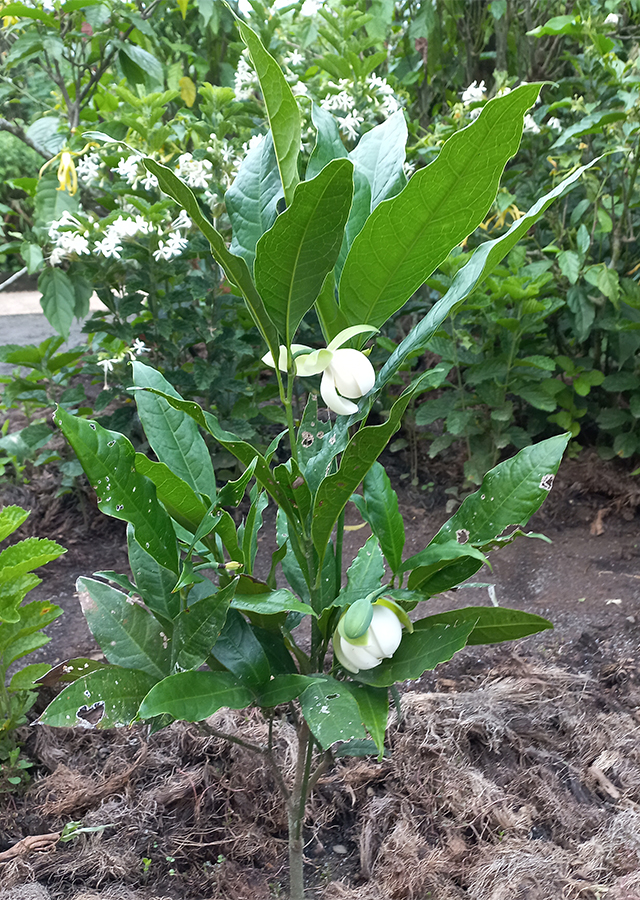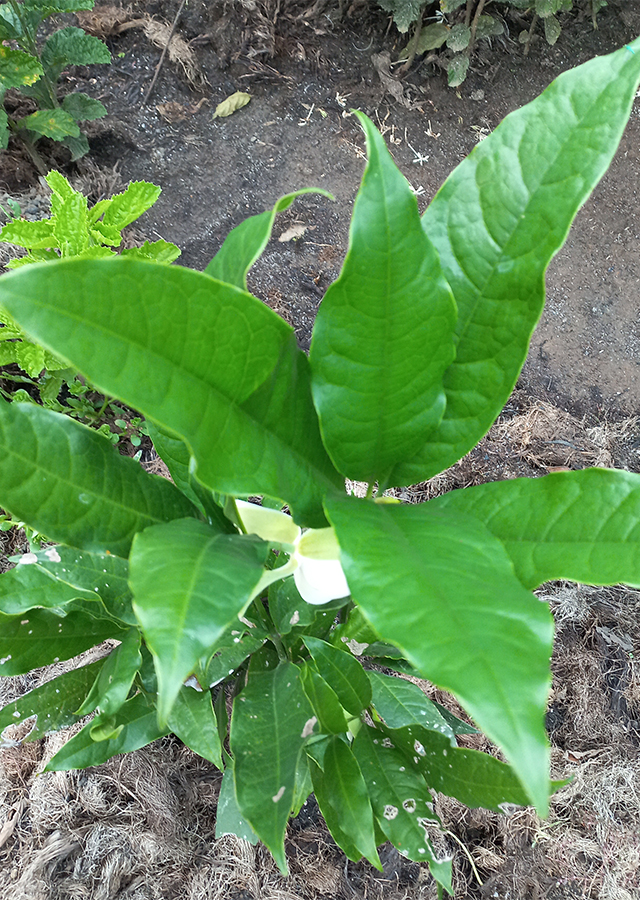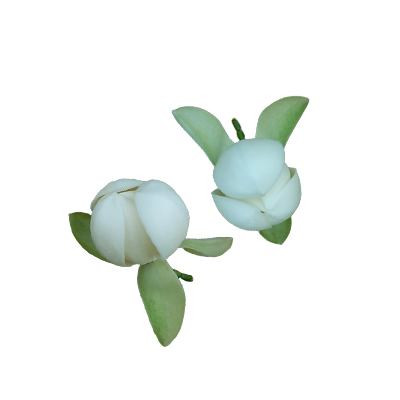Egg Magnolia
Magnolia coco (Lour.) DC.
Magnoliaceae
Location in our garden
Principal



Synonym
Lirianthe coco (Lour.) N.H.Xia & C.Y.Wu
Liriodendron coco Lour.
Liriopsis pumila Spach ex Baill.
Talauma coco (Lour.) Merr.
Habitus
Shrubs. An evergreen, medium-sized shrub or a small perennial tree growing to 3 m.
Part Used
Leaves
Bark
Flowers
Growing Requirements
Full Sunshine
Need Shade
Habitat
Terrestrial
Overview
Native to China South-Central, China South-East, Taiwan, and Vietnam. By the end of the 18th century, Magnolia species were described in China and Japan, and used in their traditional medicine. Its bark has long been used in traditional Chinese medicine where it is called houpu. Essential oil can be extracted from the flowers for perfumery. Flowers are also used to make tea.
Vernacular Names
Ye xiang mu lan (Chinese), Magnolia (Tagalog-Philippines)
Agroecology
Found in terrestrial areas and open slopes at low to high altitudes. Magnolia coco prefers semi-shade, and full sun, and moderate water. It requires sandy loam to some clay and good drainage. Loves to grow in a pH of 5.5-6.5. It tolerates to heat & humidity.
Morphology
- Root - taproot system.
- Stem - erect, cylindrical, and greyish in colour.
- Leaves - leathery, elliptic (7–28 cm long and 2–9 cm wide), glossy green with long leaf tip. Leaf margin is mildly wavy and curved slightly downwards (revolute). There are 8–10 pairs of lateral veins present on the leaf. Petiole is 0.5–1 cm long and stipular scar can be found on petiole. dark green above, and waxy pale green below.
- Flowers - single, nodding, rounded like an egg or baby coconut, opening up with 6 white fragrant petals. Unlike most magnolias lacking nectar, Magnolia coco secretes a nectar-like substance inside the flower.
- Fruit - red in colour.
Cultivation
Propagated by seeds.
Chemical Constituents
Alkaloids, lignans, coumarin, amide, tannins, phenolic, saponin, terpenoid, polyphenols, and essential oils.
Traditional Medicinal Uses
- In China, floral buds are used for headache and stomachache.
- It is used for insomnia, leucorrhea, productive coughing.
- The bark is used for allergic and asthmatic conditions. Bark extracts also reported to inhibit bacteria responsible for dental caries and periodontal disease.
- Studies had showed antioxidant, antianxiety and anti-angiogenic properties.
Part Used
Reference Sources
- Backyard Gardener. (2021). Magnolia Coco (Coconut Magnolia). https://www.backyardgardener.com/plantname/magnolia-coco-coconut-magnolia/. 15-11-2021.
- Kew Royal Botanic Gardens. (No date). Plants of the World Online: Magnolia coco (Lour.) DC. http://www.plantsoftheworldonline.org/taxon/urn:lsid:ipni.org:names:554663-1.15-11-2021.
- National Park of Singapore. (2021). Magnolia coco. https://www.nparks.gov.sg/florafaunaweb/flora/3/0/3007. 15-11-2021.
- Stuartxchange. (2019). Philippine Medicinal Plants: Magnolia, Magnolia coco (Lour.) DC. http://www.stuartxchange.org/Magnolia.html. 15-11-2021.


